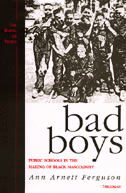One year ago, on September 30, 2009, my amazing mother, Judith Puotinen died. She died way too young (at 67) from a horrible form of cancer (pancreatic). I have written extensively on this blog about the process of living and grieving beside her as she struggled to maintain (at least in moments) a livable life. And I am excited to announce that an essay that I first began on this blog about that process will be published in a special issue on Mothering, Bereavement and Loss this December. But today, in honor of her, I don’t want to dwell on the terribly painful process of watching her slowly die. Instead, I’d rather remember who she was before (and outside of) the illness and how living beside her for 35 years, 3 months and 1 day has shaped me.
But, how can I conjure up memories of healthy, pre-cancer/no-cancer Mom, when I can’t get rid of those images of her dying in the hospital bed in the middle of the living room? And who was I before she got cancer? My mom was diagnosed in October, 2005. Even though she had been rushed to the emergency room over a week before, it wasn’t until I got the phone call from my dad saying that she had pancreatic cancer that I realized that she was going to die…soon. Pancreatic cancer is an especially deadly form of cancer, partly because it is usually only detected in the final stages. To be diagnosed with it is almost always a death sentence of six weeks or less (my mom beat the odds by living for almost 4 years). Any efforts to reverse that sentence are ultimately futile. As her doctor grimly told us at the hospital shortly after they successfully removed her tumor, the surgery and any chemo that she might do, would just be “prolonging the inevitable.” Didn’t I just write that I don’t want to dwell on her illness here, but to celebrate her life? Forgetting the cancer and the way it has shaped who I am and how I remember my mom is very, very hard. Her diagnosis changed my life and has distorted my memory of her and of us as mother and daughter, as friends, and as kindred spirits who shared amazing, and seemingly endless, conversations while walking and hiking.
Now that a year has passed, I am starting to remember brief fragments of my mom and our conversations. We used to talk about everything: books we were reading…She read A LOT of books. She always used to have a big stack of books by her bedside table. Two of the last books that I remember her reading before her anxiety and the morphine made it impossible for her to concentrate were Beowolf and de Tocqueville’s On Democracy…current events, my research, her artwork (she was a fiber artist/weaver) and whatever else we were curious about. These conversations were always intense and involved thoughtful and imaginative engagements with ideas and each other. They often lasted for hours. I remember walking around Savannah, GA for almost 8 hours just talking and talking…and talking. A couple of weeks ago I was taking a walk with my 4 year old daughter Rosie and we were talking about religion and nature and I was suddenly reminded of those great conversation walks that I used to have with my mom. I said to Rosie, “You know, your Nana and I used to take walks and talk like this all of the time. I really miss them. I’m so happy that you and I can take them now.”
Thankfully, my recollections of those conversation walks are not the only evidence of their existence. Brief moments of them have been documented in the two farm films that I created, along with my partner, in 2001 and 2003 (the second one is dedicated to my mom). But those moments are polished and shaped to fit into a narrative about the farm and the Puotinen women as storytellers. As my mom and I walk, you see us talking, but our voices are muted as the soundtrack for the movie plays. This summer, I was looking over the raw footage from those films (hours and hours of it) and found some unedited moments of those engagements from June 30, 2001 (over 4 years before she was diagnosed and most certainly before the tumor had started to grow). My mom and I (with STA filming us) are hiking at our family’s farm (sold in 2004) and talking about the farm, the lived experiences of Finnish women immigrants, raspberries, coming to the farm for the first time and my sister’s (MLP’s) terrible case of poison oak…or was it poison sumac? The sound quality is not the greatest (wind distorts the sound from the built-in microphone and rustling in the grass makes it sometimes hard to hear what we are saying), but still enables me to re-imagine that time, especially in my 20s, when my mom and I would talk and walk and engage, two kindred spirits, joyfully allowing our curiosity to open us to new ways of thinking and being and reflecting and connecting.
note, March 4, 2023: Currently, the video is missing. I’m hoping to find it and add it back in.

